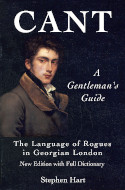THE CARLTON CLUB
The Carlton is purely a political Club, and was founded by the great Duke of Wellington, and a few of his most intimate political friends. It held its first meeting in Charles-street, St. James's, in the year 1831. In the following year it removed to larger premises, Lord Kensington's, in Carlton Gardens. In 1836, an entirely new house was built for the Club, in Pall-Mall, by Sir Robert Smirke, R.A.: it was of small extent, and plain and inexpensive. As the Club grew in numbers and importance, the building became inadequate to its wants. In 1846, a very large addition was made to it by Mr. Sydney Smirke; and in 1854, the whole of the original edifice was taken down, and rebuilt by Mr. Smirke, upon a sumptuous scale; and it will be the largest, though not the most costly Club-house, in the metropolis. It is a copy of Sansovino's Library of St. Mark, at Venice: the entablature of the Ionic, or upper order, is considerably more ponderous than that of the Doric below, which is an unorthodox defect. The façade is highly enriched, and exhibits a novelty in the shafts of all the columns being of red Peterhead granite, highly polished, which, in contrast with the dead stone, is objectionable: "cloth of frieze and cloth of gold" do not wear well together. In the garden front the pilasters, which take the place of columns in the entrance front and flank, are of the same material as the latter, namely, Peterhead granite, polished. Many predictions were at first ventured upon as to the perishable nature of the lustre of the polished granite shafts; but these predictions have been falsified by time; nine years' exposure having produced no effect whatever on the polished surface. Probably the polish itself is the protection of the granite, by preventing moisture from hanging on the surface.
The Carlton contains Conservatives of every hue, from the good old-fashioned Tory to the liberal progressist of the latest movements,—men of high position in fortune and politics.
Some thirty years ago, a Quarterly reviewer wrote: "The improvement and multiplication of Clubs is the grand feature of metropolitan progress. There are between twenty and thirty of these admirable establishments, at which a man of moderate habits can dine more comfortably for three or four shillings (including half a pint of wine), than he could have dined for four or five times that amount at the coffee-houses and hotels, which were the habitual resort of the bachelor class in the corresponding rank of life during the first quarter of the century. At some of the Clubs—the Travellers', the Coventry, and the Carlton, for example—the most finished luxury may be enjoyed at a very moderate cost. The best judges are agreed that it is utterly impossible to dine better than at the Carlton, when the cook has fair notice, and is not hurried, or confused by a multitude of orders. But great allowances must be made when a simultaneous rush occurs from both Houses of Parliament; and the caprices of individual members of such institutions are sometimes extremely trying to the temper and reputation of a chef."
John Timbs
Club Life of London Vol. I
London, 1866

